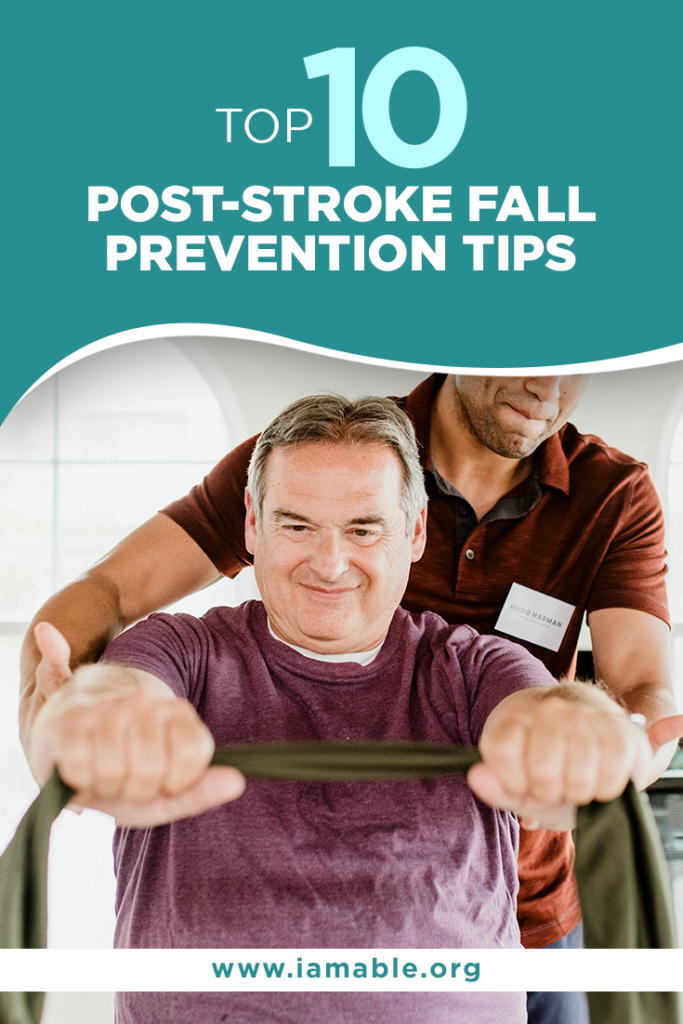Miami, FL 33186

Post-stroke fall prevention is crucial because it helps protect against additional injuries and complications. Check out the best tips you can follow here.
Falls after stroke turns out to be a common problem among survivors. According to a study, it primarily results from the decreased body strength and balance, visual challenges, hemineglect, and perceptual issues. Unfortunately, post-stroke falls pose life-threatening risks and may cause reduced mobility.
As a trusted provider of activity-based therapy in Miami, we thought of addressing this problem by sharing some of the best and most practical tips for post-stroke fall prevention.
Learn more about the simple changes you can integrate into your daily routine so you can avoid falling or tripping during your stroke recovery period.
Generally, stroke survivors undergo assessment for post-stroke fall risks. Hospital staff has to provide a thorough diagnosis and instructions on minimizing the likelihood of accidents to both the patient and family.
In most cases, doctors evaluate a patient’s postural inability according to the following parameters:
A 2020 study explains that postural inability during stroke recovery can last for years. That’s why it’s crucial to plan the adjustments you need in your routine and environment as soon as possible.
Doing core exercises can make a big difference in your post-stroke recovery journey. It also helps keep you maintain balance, decreasing your chances of falling. Some examples of core strengthening exercises you can include are the following:
Falls can readily happen if you don’t make necessary changes to your home. For example, putting things in hard-to-reach places puts yourself at risk of overstretching your back or losing your balance. Here are other home improvement tips to help create a post-stroke friendly environment:
Studies show that about 65 percent of stroke survivors experience visual changes. Unfortunately, most patients who have vision loss because of stroke never regain their ability to see again. Others, on the one hand, develop the following visual concerns:
If you have any of these problems, we strongly recommend working with eye doctors or brain specialists. This way, you can diagnose the problem and find the necessary interventions to reduce your likelihood of getting injured.
Stroke recovery can take long to complete. Moreover, it doesn’t fall short of challenges, making it extremely important to have someone help you from time to time. Consider calling help from your family members or perhaps trained professionals like nurses and therapists to assist you in overcoming difficulties.
With today’s fast-paced technical advancements, it’s not surprising to see helpful post-stroke devices that protect against falling. If you have a high risk of falling, you can try using a bed or chair alarm. Besides electronic devices, you can also tap into simple assistive devices like sock aids, velcro fasteners, rocking T knives, and finger loop utensils to easily transition into your usual routine.
It’s no secret that some medications can induce side effects like nausea or vertigo attacks. That’s why we highly recommend reading your medication’s product label. If you have these in your prescription, you can talk to your physician to switch to other options with fewer or less intense side effects.
Studies often associate low vitamin D levels in the blood with poor stroke recovery outcomes. In a 2019 study on Vitamin D supplementation on acute stroke survivors, researchers found that maintaining optimal vitamin D levels help improve calf circumference and handgrip.
They also note that addressing vitamin D deficiencies have greatly improved the patients’ Barthel Index – a scale used to gauge functional independence in patients with disabling conditions such as paralysis from a stroke. Talk to your doctor about vitamin D supplementation to know the exact dosage you need each day.
Eating balanced and healthy meals and keeping your body well-hydrated plays a significant role in preventing falls after you recover from a stroke. These two simple activities ensure that your body gets enough nutrition so you can heal tissue damage, keep the muscles and nerves in tip-top condition, and prevent health problems like dizziness or loss of balance.
Did you know that about two-thirds of stroke cases in the USA require rehabilitation? Post-stroke rehabilitation involves relearning temporarily lost skills due to the damage incurred to the brain during a stroke.
It also helps reduce a patient’s chances of developing complications like permanent paralysis, difficulty swallowing, and sensory loss. Patients in Miami often have various options for post-stroke rehabilitation, including:
Stroke doesn’t only cause about 137,000 deaths in the USA. Instead, it is also among the leading causes of long-term paralysis. Many patients who survived a stroke report various problems like managing movement difficulties and searching for better ways to do day-to-day activities.
Thankfully, interventions like seeking activity-based therapy in Miami, provide so much help to stroke survivors. Using activity-based therapy, you can stimulate muscles and nerves affected by stroke. It also comes in extra handy in maintaining blood circulation and loosening up stiff and sore muscles so that you can recover faster.
Read more about how you can take full advantage of your second chance at life through undergoing activity-based therapy and making lifestyle adjustments. Learn more about how you can do that with the iAM ABLE eBook, a comprehensive guide for patients recovering from paralyzing conditions like stroke.
Grab our free e-book 7 Unbelievably Important Steps to Take to THRIVE after Paralysis by clicking the image below.
